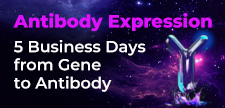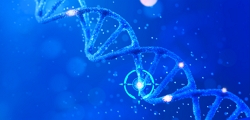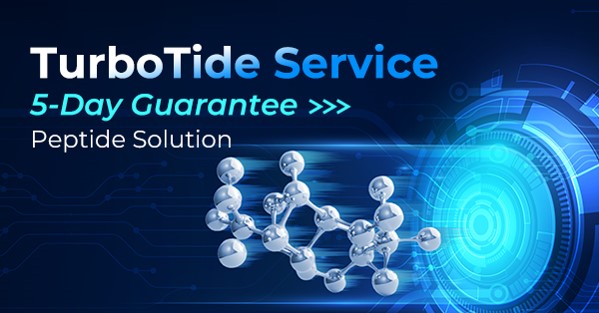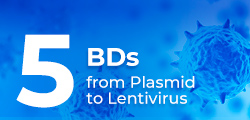-
REAGENT SERVICES
Hot!
-
Most Popular Services
-
Molecular Biology
-
Recombinant Antibody/Protein
-
Reagent Antibody
-
CRISPR Gene Editing
-
DNA Mutant Library
-
IVT RNA and LNP Formulations
-
Oligo Synthesis
-
Peptides
-
Cell Engineering
-
- Gene Synthesis FLASH Gene
- GenBrick™ Up to 200kb
- Gene Fragments Up to 3kb now
- Plasmid DNA Preparation Upgraded
- Cloning and Subcloning
- ORF cDNA Clones
- mRNA Plasmid Solutions New!
- Cell free mRNA Template New!
- AAV Plasmid Solutions New!
- Mutagenesis
- GenCircle™ Double-Stranded DNA New!
- GenSmart™ Online Tools
-
-
PRODUCTS
-
Most Popular Reagents
-
 Instruments
Instruments
-
Antibodies
-
ELISA Kits
-
Protein Electrophoresis and Blotting
-
Protein and Antibody Purification
-
Recombinant Proteins
-
Molecular Biology
-
Stable Cell Lines
-
Cell Isolation and Activation
-
 IVD Raw Materials
IVD Raw Materials
-
 Therapy Applications
Therapy Applications
-
Resources
-
- All Instruments
- Automated Protein and Antibody Purification SystemNew!
- Automated Plasmid MaxiprepHot!
- Automated Plasmid/Protein/Antibody Mini-scale Purification
- eBlot™ Protein Transfer System
- eStain™ Protein Staining System
- eZwest™ Lite Automated Western Blotting Device
- CytoSinct™ 1000 Cell Isolation Instrument
-
- Pharmacokinetics and Immunogenicity ELISA Kits
- Viral Titration QC ELISA Kits
- -- Lentivirus Titer p24 ELISA KitHot!
- -- MuLV Titer p30 ELISA KitNew!
- -- AAV2 and AAVX Titer Capsid ELISA Kits
- Residual Detection ELISA Kits
- -- T7 RNA Polymerase ELISA KitNew!
- -- BSA ELISA Kit, 2G
- -- Cas9 ELISA KitHot!
- -- Protein A ELISA KitHot!
- -- His tagged protein detection & purification
- dsRNA ELISA Kit
- Endonuclease ELISA Kit
- COVID-19 Detection cPass™ Technology Kits
-
- Automated Maxi-Plasmid PurificationHot!
- Automated Mini-Plasmid PurificationNew!
- PCR Reagents
- S.marcescens Nuclease Benz-Neburase™
- DNA Assembly GenBuilder™
- Cas9 / Cas12a / Cas13a Nucleases
- Base and Prime Editing Nucleases
- GMP Cas9 Nucleases
- CRISPR sgRNA Synthesis
- HDR Knock-in Template
- CRISPR Gene Editing Kits and Antibodies
-
![AmMag™ Quatro Automated Plasmid Purification]() AmMag™ Quatro automated plasmid purification
AmMag™ Quatro automated plasmid purification
-
![Anti-Camelid VHH]() MonoRab™ Anti-VHH Antibodies
MonoRab™ Anti-VHH Antibodies
-
![ELISA Kits]() ELISA Kits
ELISA Kits
-
![Precast Gels]() SurePAGE™ Precast Gels
SurePAGE™ Precast Gels
-
![Quatro ProAb Automated Protein and Antibody Purification System]() AmMag™ Quatro ProAb Automated Protein and Antibody Purification System
AmMag™ Quatro ProAb Automated Protein and Antibody Purification System
-
![Target Proteins]() Target Proteins
Target Proteins
-
![AmMag™ Quatro Automated Plasmid Purification]() AmMag™ Quatro automated plasmid purification
AmMag™ Quatro automated plasmid purification
-
![Stable Cell Lines]() Stable Cell Lines
Stable Cell Lines
-
![Cell Isolation and Activation]() Cell Isolation and Activation
Cell Isolation and Activation
-
 IVD Raw Materials
IVD Raw Materials
-
![Quick
Order]() Quick Order
Quick Order
-
![Quick
Order]() Quick Order
Quick Order
- APPLICATIONS
- RESOURCES
- ABOUT US
- SIGN IN My Account SIGN OUT
- REGISTER

![Therapeutic Antibody Drug Discovery Planning Therapeutic Antibody Drug Discovery Planning]()
Therapeutic Antibody Drug Discovery Planning
Resources » Technical Resource Centers » Antibody Technical Resources » Therapeutic Antibody Drug Discovery Planning
- Antigen Prediction Tool
- Antibody Selection Guide
- Polyclonal or Monoclonal Antibodies
- Protein Antigens vs Peptide Antigens
- Advantages of Peptide Antigens
- Technology and Protocols
- Disclaimer and Production Note
- Publications
- Antibodies for Senescence and Aging
- Comprehensive Package
- Protein phosphorylation vs. ubiquitination in drug development
- Membrane Proteins
- IgM Antibody
- Self-Tolerance
- Therapeutic Antibody Drug Discovery Planning
- ELISA
- Western Blot Antibody Troubleshooting
- What are monoclonal antibodies
- How to make polyclonal antibodies
- Immune Checkpoint Inhibitors
- Antibody Validation
- Antibody Blog
- Antibody News
- GenSmart™ Variable Domain Sequence Analysis tool for recombinant antibody design
Therapeutic antibody drugs have recently experienced explosive growth. Within oncology research alone, 14 therapeutic antibody drugs received FDA approval for new treatments or indications during 2015. Additionally, more than 300 therapeutic antibody drugs are in ongoing clinical trials. Driven by the increase in biomarker discovery, more and more therapeutic antibody drugs are set to enter the market with increased competition. Therefore, to maximize the success of therapeutic antibody drug development programs, it is essential to thoroughly examine every aspect of the therapeutic antibody drug discovery process.
What Is Involved in Therapeutic Antibody Drug Discovery?
Firstly, target selection is paramount. The characteristics of the intended therapeutic target will define many of the critical decisions of the therapeutic antibody drug discovery process. Key features of the target that necessitate careful consideration and understanding are listed in the table below.
Target Features Considerations Possible Solutions Expression Profile and Tissue Accessibility Is the target broadly expressed?- Therapy may affect many tissues.
- Overexpression of biomarker may still outweigh broad expression profile, eg. HER2.
- Direct injection administration.
- Choose alternative target.
How will the target be reached?
-via intravenous administration- circulating half-life affects dosing and availability
-via oral administration- stability concerns
- Whole IgG formats offer longer circulating half-lives compared to fragment antibody formats.
What is the quality of the target tissue?- dense tissue or minimally vascularized tumors
- protected by blood brain barrier (BBB)
- The small size of single domain antibodies allow for penetration of dense tissue and BBB.
Molecular Characteristic Is the target membrane bound or soluble?
-Membrane bound antigens create difficulties, eg. GPCR.- discontinuous epitopes
- required membrane structure can degrade during antigen purification
- low antigen production yields
- DNA immunization simplifies antigen production via in vivo native protein expression and allows for immunization against otherwise toxic, unstable, or insoluble antigens.
- Soluble targets pose fewer problems and may only require traditional immunoglobulins, eg. IgG1.
Does the target internalize?- subcellular delivery opportunity
- depletion of extracellular drug concentration
- Conjugate Ab to intracellular location dependent payload (eg. nuclear transcription factor, toxin).
- Larger quantities of therapeutic antibody may be needed.
Does the target share high-homology with endogenous protein?- Generation of antibody may be difficult.
- Immunization strategy to break self-tolerance mechanisms, eg. ImmunoPlus.
Intended Mechanism of Therapy Targeting immune system manipulation?- Which immune mechanism will be influenced?
- Is the target an immune checkpoint, eg. Yervoy® (ipilimumab)?
- FcγRIII region should be optimized to stimulate immune system.
- ADCC & CDC studies will be required to test immune checkpoint effect.
Up/Down-regulating target functions?- requires antibody to both bind and induce signal
- Tractable discovery process will require high-throughput screening of regulation.
Trying to neutralize or clear antigen?- several options to choose from
- IgM and IgA multi-valency and broad reactivity excel at neutralizing toxins, eg. Staphylococcus aureus pyrogenic toxin exotoxin A (SpeA).
- IgG may provide enough clearance capabilities and modifying Fc region can improve performance.
Early Stage Therapeutic Antibody Drug Discovery
-Inform In vivo Studies From In vitro DataTherapeutic antibody drugs should be well characterized in vitro prior to entering the in vivo phase of investigation. Animal experiments can cost excessive amounts of time and money. Gaining essential measures in vitro will expedite downstream studies through informing dosing regimens, analysis capabilities, and estimating efficacy. Such criteria include:
-
Antibody Characterization:
Dissociation Constant (KD): Antibody affinity (1/KD) can forecast dosing concentrations.
Receptor Activating or Blocking Concentrations: Establishing EC50 or IC50 will determine required in vivo concentrations. -
Basic Assays:
Western Blot to measure denatured protein: Target and effector response is qualified via western blot densitometry.
Enzyme-linked Immunosorbent Assay (ELISA) with purified protein: Valuable for measuring circulating levels of therapeutic antibody drug.
Fluorescent Activated Cell Sorting(FACS) to measure fully matured receptor: Realizing in vivo efficacy hinges upon antibodies recognizing endogenous expression states.
Cell and tissue Immunohistochemistry(IHC) or Immunofluorescence(IF): Visualizing pathological effects of therapy as well as drive new observations to further study.
-
Additional Measurements:
Antibody-dependent Cell-mediated Cytotoxicity or Complement Dependent Cytotoxicity(ADCC/CDC): To a degree, the ability of the antibodies to recruit immune function can be projected by in vitro assays. Properly controlled in vitro ADCC/CDC studies with negative results should give pause to expectation of success in vivo.
Middle Stage Therapeutic Antibody Discovery
-Final Preparations for In vivo TestingAffinity (1/KD) may be the most critical characteristic informing the in vitro-in vivo transition. Along with EC50 or IC50, affinity metrics establish the expected range of circulating concentrations required to drive antibody binding, and subsequent effects. Additionally, knowing the performance of a therapeutic antibody drug in typical immunoassays not only validates function but also sets the groundwork for requisite measurements during in vivo testing. Parallel to quantifying antibody binding performance, activation and functional assays gauging therapeutic efficacy should also be firmly established. Some difficulty may arise during transition to in vivo studies as a replete biological system can often muddy results compared to a relatively clean in vitro system. Preparations and practice for in vivo assessment can be made via spiking samples (i.e. serum, tissues) with the antigen or signaling markers intended to be measured. Titration of spiking concentrations in samples will establish the sensitivity of the measurement system. This exercise can test sample processing and help guide modifications to prevent confounding assay results. Every optimization made before commencing in vivo studies means one less hurdle to overcome once precious samples are in hand.
One of the final preparations before entering in vivo studies is to scale up production of therapeutic antibody. Although this stage is downstream in the discovery process, it is a consideration that should be made early in therapeutic antibody drug discovery planning as identical material should be used throughout the study. Different therapeutic antibody technologies lend themselves to varied scales of production. Depending on the final amount of therapeutic antibody needed, hybridoma expansion in flasks, ascites, or roller bottles, phage display, antibody library or some combination of them all may be appropriate.
Late Stage Therapeutic Antibody Drug Discovery
-Beginning In vivo StudiesOnce enough therapeutic antibody drug is produced and assays readied, in vivo investigation can commence. In vivo validation will reveal:
-
How long the therapeutic antibody drug persists in the circulation
Determine pharmacokinetics (PK) and pharmacodynamics (PD) - The optimal dosing regimen
- Unanticipated off-target effects
- Unknown sites of target expression through surprising response to therapy
The best way to capture and measure circulating levels of antibody is with an anti-idiotype (anti-ID) antibody. Anti-ID antibodies only recognize the antibody of interest.
Largely, in vivo studies will reveal the PK and PD of a therapeutic antibody drug. In vivo studies can also reveal off-target effects in vitro assays are incapable of reporting. Off-target effects may require a reappraisal of the target, antibody design, or overall therapeutic strategy to remove these unexpected hurdles.
Beyond Therapeutic Antibody Drug Discovery
-What to AnticipateAt some point during antibody drug discovery, antibody sequencing should be entertained. Acquiring the sequence of useful antibodies provides significant benefits. Firstly, hybridoma stocks can only survive limited rounds of replication, and even redundant stocks can potentially see catastrophic loss. Sequencing of the antibody preserves the sequence in silico. As the ultimate goal is to generate a therapeutic antibody that can be utilized in man, antibody sequencing also allows for antibody humanization. Humanized antibody can be used in clinical trials and/or further tested in a humanized mouse model to inform safety and efficacy. Additionally, antibody sequencing can allow for lot to lot consistency as well as large scale production needed for expanding studies via recombinant antibody (rAb) technology. Lastly, but certainly not least, antibody sequencing is also required to patent and protect the intellectual property of any potentially novel and useful antibodies. Although it is possible to arrive at an antibody sequence from traditional hybridoma strategies, ultimately it may be more logical to employ rAb techniques from the start. These are all considerations that need to be evaluated based on budget, time, scope, and technology at your disposal.
Therapeutic Antibody Drug Discovery Related Services
GenScript offers an entire platform of Therapeutic Antibody Drug Discovery Services catering to every step in the process from lead generation, to optimization, and finally production at any scale. A few of our industry leading services include:
DNA immunizationcircumvents in vitro protein antigen production and overcomes difficult targets.
Learn MoreHigh Throughput Gene to Antibodyfast and cost effective production of rAb up to 1mg. Ideal for therapeutic antibody drug.
Learn MoreAnti-idiotype Antibodiesspecifically detects antibody drug by targeting just the complementarity determining region.
Learn MoreGet a quote today!
Quotations and Ordering
Submit quotation requestA Technical Account Manager will e-mail you within 24 hours to finalize quoteReview and approve final order and priceTo place order, provide credit card/PO informationProduction of your project begins immediatelyA Project Manager is in contact with you during the production process to give updatesOur customer service representatives are available 24 hours a day, Monday through Friday to assist you.

-





































